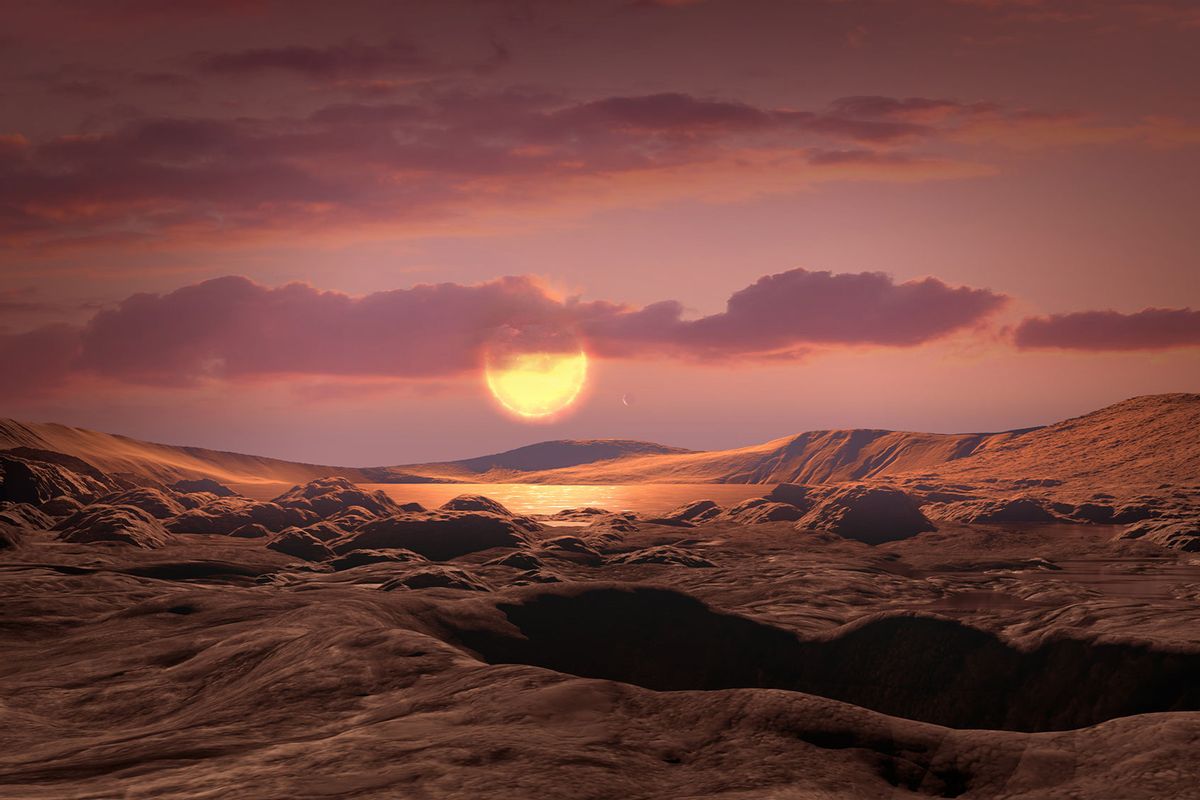Nearly 50 years ago, astronomers didn't know for certain if there were any planets outside of our own solar system.
However, thanks to recent technological advances, the last three decades have brought on a slew of astronomy data such that there are now an estimated 5,307 exoplanets in 3,910 planetary systems (as of February 2023). While finding exoplanets (meaning planets outside of our own solar system) is no longer a significant challenge, what is difficult is finding the habitable ones — meaning those that could sustain life on Earth as we know it. Currently, only an estimated 1.5 percent of exoplanets discovered have been catalogued as potentially habitable worlds.
According to computer simulations, this exoplanet could have a "moderate Earth-like atmosphere" and moderate temperatures.
This month, a team of international astronomers announced that they've discovered a remarkable exoplanet that is remarkably similar to Earth as well as very close, at least on a galactic scale. The details of the discovery were published in the journal Astronomy & Astrophysics, which noted that the new planet, dubbed Wolf 1069b, has roughly 1.26 of the Earth's mass and about 1.08 its size. But perhaps most tantalizing is that Wolf 1069b is located in the habitable zone of its host star — meaning that liquid water could exist on its surface.
"When we analyzed the data of the star Wolf 1069, we discovered a clear, low-amplitude signal of what appears to be a planet of roughly Earth mass," said Diana Kossakowski, an astronomer at the Max Planck Institute for Astronomy in Germany and lead author on the new research, in a statement. "It orbits the star within 15.6 days at a distance equivalent to one-15th of the separation between the Earth and the sun."
Want more health and science stories in your inbox? Subscribe to Salon's weekly newsletter The Vulgar Scientist.
This means that the potentially habitable exoplanet is much closer to its host star. In fact, a year on this exoplanet equates to nearly half a month on Earth. While such proximity to one's parent star could equate to unbearably hot temperatures, it doesn't in this solar system because the host star is much smaller than our sun. The researchers estimate that Wolf 1069b only receives about 65 percent of the incident radiant power of what the Earth gets from the Sun. Kossakowski explained that this changes the location of solar system's habitable zone, making it acceptable for a potentially habitable planet to be closer to its host star.
"As a result, the so-called habitable zone is shifted inwards," Kossakowski said.
At a mere 31 light-years away, Wolf 1069 b is now the sixth closest Earth-mass planet in the habitable zone of its host star. That is extremely close, at least in galactic terms: the nearest star to Earth is 4.2 light years away, while the Milky Way galaxy is 100,000 light years in diameter and has at least 100 billion stars.
According to computer simulations, this exoplanet could have a "moderate Earth-like atmosphere" and moderate temperatures. But unlike Earth, this exoplanet is tidally locked, which means that the side that is always facing its star experiences eternal day while it is always night on the opposite side. As a result, astronomers believe that if it is habitable, it would only be on the daytime side.
Harvard astronomer Avi Loeb told Salon via email this new exoplanet is very reminiscent to Proxima Centauri b, which is the nearest potentially habitable exoplanet to our solar system. Indeed, Proxima Centauri b has an orbital period of 11.2 days and orbits a dwarf star with 12.2 percent the mass of the sun.
"Dwarf stars like these are the most common stars; their lifespan is trillions of years, hundreds of times longer than Sun-like stars because they burn their nuclear fuel slowly," Loeb said. "Since they are nearly a thousand times fainter than the Sun, the habitable zone is tens of times closer than the Earth-Sun separation."
But the question as to whether or not it is truly suitable for life remains to be determined. Loeb added that the atmospheres of planets like Wolf 1069 b are typically "more vulnerable to stripping by the stellar winds and ultraviolet flare."
"If the atmospheres are stripped, the planets could not have liquid water on their surface because it would evaporate into gas," Loeb said. Loeb noted we've seen this happen in our own solar system: "The liquid oceans on Mars evaporated after it lost its atmosphere; this risk for losing atmospheres in the habitable zone of dwarf stars may explain why we reside near a rarer star like the Sun."
The next step would be to search for biosignatures on Wolf 1069b. Unfortunately, the technology just isn't there yet.
"We'll probably have to wait another ten years for this," Kossakowski points out. "Though it's crucial we develop our facilities considering most of the closest potentially habitable worlds are detected via the RV [radial velocity] method only," which is how Kossakowski and her colleagues found this new exoplanet.



Shares